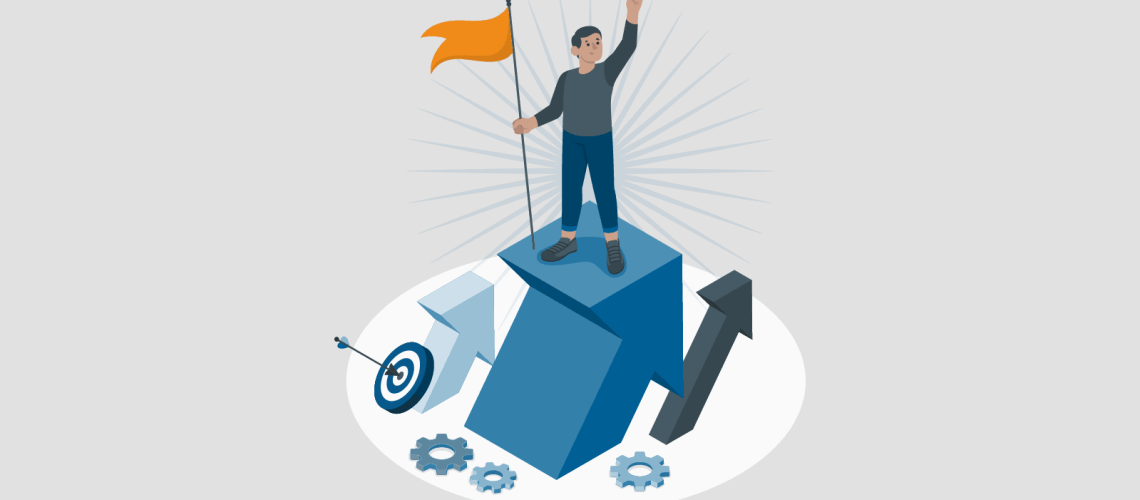Highlights
- Power BI can help drive organizations towards a central version of the truth when used as more than a reporting tool.
- Many often-overlooked features and functions that help accomplish this within Power BI fall outside of what most people learn about the tool.
Power BI is much more than a reporting tool. When used to its full potential Power BI can transform your business as you move towards a central source of truth for answering business questions.
Organizations often utilize Power BI as a tool to build data models and reports and then rinse and repeat. Doing so, however, sells short the true capabilities of the tool and can hold your business back in the long term.
When Power BI is used on an enterprise-level rather than an individual level, teams can iterate their way to a central version of the truth. Reaching a central truth is a journey in and of itself, and this article will cover how to use Power BI as a resource along that journey.
Sections
- Introduction
- What is a Central Version of the Truth?
- Why Do Central Version of the Truth Projects Fail?
- Power BI Guiding Stars
- Power BI Features and Functions
- Mindset Towards Central Version of the Truth
What is a Central Version of the Truth?
A central version of the truth is an established understanding of data, for a particular subject area (Sales, Inventory, Safety, etc.) used company-wide. It ensures that sales, marketing, finance, and other departments use the same data sets and definitions to reach various business decisions.
The road to a central truth is not a straight line and will happen over time through various iterations. It will differ from company to company, and even internally as it evolves and changes.
There are a few components every organization should have as they establish their central version of the truth, including:
- A single place to house information for a subject area (for example, Power BI)
- Secured organization-wide access to accurate data
- Clear definitions of terms
- A shared understanding of business rules (e.g. how to calculate these things such as headcount and gross margin)
- An iterative mindset that allows for growth and change
Why Do Central Version of the Truth Projects Fail?
The goal of achieving a central version of the truth can be challenging. Many organizations have tried and failed and by this, the notion of a central truth carries historical baggage. Maybe you’ve experienced this at your organization or heard stories within your industry.
Over the years, much has changed with people, processes, technology, and data that has made the road to a central truth much smoother. When approached correctly, central truth projects can:
- Improve data quality
- Eliminate duplicate entries of data
- Increase collaboration and communication among departments
- Save time determining which data sets to use
- Optimize processes
Here are a few reasons why central truth projects fail. Think of them as a list of things to avoid when planning and executing your central version of the truth project.
- Unrealistic expectations. Like most things in life, it’s impossible to get your central truth 100% correct the first time and never have to change it. Instead of waiting to roll it out until it is “perfect,” start using it immediately and adapt over time.
- Lack of business presence. Although it is an IT tool, it must be business-driven.
- Self-service for all with no understanding of the user base. Not everybody wants to or can do self-service.
- We will build it, and it will last forever and never change. This is not true. A successful central truth is iterative and adapts to meet changing business needs.
Power BI Guiding Stars
Now that we’ve set some realistic expectations for reaching a central version of the truth at your organization let’s dive right into how Power BI fits into the process.
There are three main supporting structures when establishing a central version of the truth:
- Center of Excellence
- Training
- Environment governance and usage metrics
When an organization first builds data models in Power BI, there will inevitably be overlaps as users build up similar models without communicating or collaborating. This is initially acceptable, but as your organization progresses towards a central truth, you’ll need to consolidate to fewer data sets and reports until you eventually have single models that the entire organization can use for a subject area such as sales or inventory.
This boils down to a 2 step Power BI learning journey:
Step 1: Developing and iterating on individual assets
- Build individual skills in analysis and Power BI.
- Make your processes efficient.
- Clean up your own backyard.
- Once a data set is as far as an individual can take it, move it to a central team.
Step 2: Developing and iterating toward organizational assets
- Find and prioritize mission-critical data sets for consolidation.
- Consolidate those to fewer shared data sets.
- Utilize the endorsement process.
- Announce to the organization and then continue to iterate.
Power BI Features and Functions
Here are a few categories of features and techniques in Power BI that will aid in you moving towards a central truth.
The data model itself
- Naming conventions: The Center of Excellence should establish naming conventions and educate and iterate on them. There must be an endorsement process in place for this.
- Synonyms: This is an under-utilized feature that enables you to have multiple names for tables and columns. For example, if marketing wants to call a customer a guest, but sales refer to it as a customer, Power BI enables you to put synonyms on top of it so teams can use their preferred language. This makes models more flexible and is the secret sauce behind Q&A and Natural Language Query.
Exposing content to a wider audience
- Workspaces: Power BI workspaces are excellent places to collaborate on dashboards, reports, and datasets to create apps. Individuals can start working in “My Workspace” and move content to a shared Workspace once it’s ready.
- Data set sharing: Sharing a data set grants access to it to others. This helps create a data set that users can rally around and/or avoid making a similar data set.
- Dataset discovery: Often, people don’t know about great creations. The datasets hub makes it easy to find, explore, and use the datasets in your organization. It provides information about the datasets and entry points for creating reports on top of those datasets or for using them with Analyze in Excel. People can find the data and ask questions about it.
- Endorsement process: Your Center of Excellence should control the endorsement process. Certification within Power BI signifies that the content meets the organization’s quality standards and can be regarded as reliable, authoritative, and ready for use across the organization. Promotion can be used to highlight the content you think is valuable and worthwhile for others to use.
Security and sensitivity
- Row-level security: This can be used to restrict data access for individual users. Filters restrict data access at the row level, and you can define filters within roles. This promotes fewer data sets and reports.
- Object-level security: Enables model authors to secure sensitive tables or columns from report viewers. From the standpoint of the user without proper access, the secured table or column does not exist.
- Sensitivity labeling: Labeling your data correctly with sensitivity labels ensures that only authorized people can access your data. Microsoft Information Protection sensitivity labels on your reports, dashboards, datasets, dataflows and .pbix files can guard your sensitive content against unauthorized data access and leakage.
Development and administration
- Deployment pipelines: Deployment pipelines are an efficient and reusable tool for creators in an enterprise with Premium capacity. They enable creators to develop and test Power BI content in the Power BI service before the content is consumed by users.
- Usage metadata: Usage metrics help you understand the impact of your dashboards and reports. When you run either dashboard usage metrics or report usage metrics, you discover how those dashboards and reports are being used throughout your organization, who’s using them, and for what purpose. This helps to maintain consistency across environments while keeping them “tidy”.
Mindset Towards Central Version of the Truth
We covered many techniques and tips to use on your journey towards the central version of the truth. However, the ultimate differentiator among central truth projects that fail and those that succeed is the mindset.
Successful organizations are moving from treating the development of a central truth as one big monolithic project, to a series of smaller iterations by subject area. This approach requires taking a different approach that includes:
- Iterative mindset
- Continuous improvement
- Patience
- Getting everyone on the same page
Once an organization has a clear understanding of their journey towards a central version of the truth, they can use the tools within Power BI that we discussed to help get there. Need help unlocking the full potential of Power BI to reach your organization’s central truth? Please contact us today.



